


The Pursuit Of Water Efficiency
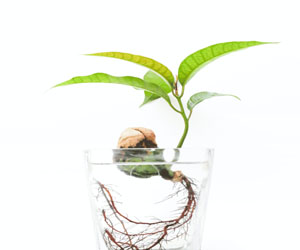
Water, the source of life, is a finite and precious resource. As the global population burgeons, the importance of water efficiency becomes paramount. Efficient water use is not only essential for safeguarding the environment but also for ensuring a sustainable future. In this article, we will explore the significance of water efficiency, the strategies employed to achieve it, and the positive impacts it can have on our world.
The Significance Of Water Efficiency
Water efficiency, often referred to as water conservation, involves using water in a way that minimizes waste while maximizing benefits. It is vital for several reasons:
Sustainability: As populations grow and climate change exacerbates water scarcity, efficient water use is necessary to meet the needs of current and future generations.
Environmental Preservation: Efficient water use helps protect aquatic ecosystems, conserves habitats, and reduces the negative impacts of water extraction on nature.
Economic Benefits: By reducing water waste, businesses and industries can cut costs, enhance their resilience to water scarcity, and maintain profitability.
Strategies For Achieving Water Efficiency
Numerous strategies and technologies promote water efficiency:
Water-Saving Appliances: Low-flow toilets, high-efficiency washing machines, and water-efficient faucets help reduce domestic water use.
Smart Irrigation: Advanced irrigation systems equipped with sensors and weather data can optimize watering schedules, reducing water waste in agriculture and landscaping.
Leak Detection: Identifying and repairing leaks in water supply systems is a crucial step in preventing water loss.
Wastewater Treatment And Reuse: Treating and reusing wastewater for non-potable purposes like irrigation or industrial processes conserves freshwater resources.
Public Awareness: Educational campaigns and policies can encourage responsible water use among individuals and communities.
Positive Impacts Of Water Efficiency
Efficient water use offers a range of positive impacts:
Conserving Water Resources: By minimizing water waste, we ensure that enough freshwater is available for essential needs, even during periods of scarcity.
Reducing Energy Consumption: Water and energy are intrinsically linked. Water efficiency helps reduce the energy required for water treatment and transportation.
Protecting Ecosystems: Efficient water use reduces the diversion of water from natural habitats, preserving aquatic ecosystems and their biodiversity.
Financial Savings: Both households and industries can enjoy cost savings through reduced water bills and improved resource management.
Mitigating Water Scarcity: In regions with water scarcity issues, water efficiency can help alleviate pressure on available water sources.
Challenges And Future Goals
Water efficiency is not without challenges. Resistance to change, inadequate infrastructure, and the need for widespread adoption of water-saving technologies can pose hurdles. Climate change and unpredictable weather patterns may also complicate water resource management.
Looking to the future, the goal is to make water efficiency a fundamental part of our daily lives. Policies and regulations can encourage efficient water use, and technological advancements will continue to drive progress in this area. By embracing water efficiency as a collective responsibility, we can ensure that the elixir of life remains available for all and safeguard the future of our planet.
A Crucial Step Towards A Sustainable Future
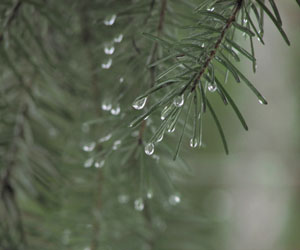 The Global Water Challenge
The Global Water Challenge
Water scarcity is a pressing concern that affects both developed and developing nations. Climate change, population growth, urbanization, and inefficient water management practices all contribute to this crisis. According to the United Nations, by 2030, nearly half of the global population will be living in areas with high water stress, underscoring the urgency of effective water conservation.
The Significance Of Water Conservation
Water conservation is the practice of using water more efficiently and minimizing waste. It is a fundamental approach to address the water crisis for several reasons:
Preserving Natural Ecosystems: Adequate water conservation ensures that freshwater ecosystems, such as rivers, lakes, and wetlands, maintain their vitality, safeguarding biodiversity and ecological balance.
Reducing Energy Consumption: Treating, transporting, and heating water demands substantial energy. Water conservation lowers energy use and carbon emissions, contributing to a greener environment.

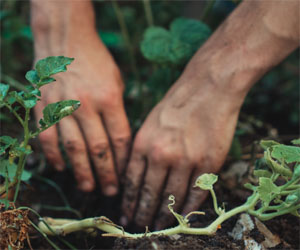




The Dynamics Of Growth And Development
 Physical Growth
Physical Growth
Physical growth is most evident during infancy and adolescence. During infancy, babies experience rapid physical growth, leading to significant weight gain and a noticeable increase in length. In adolescence, a growth spurt occurs, contributing to the dramatic changes in height and the development of secondary sexual characteristics.
Cognitive Development
Cognitive development is the process of acquiring knowledge, reasoning abilities, problem-solving skills, and language proficiency. Jean Piaget's theory of cognitive development identifies stages of development, from the sensorimotor stage in infancy to the formal operational stage in adolescence. This progression reflects the increasing complexity of thought processes and problem-solving abilities.
Emotional And Social Development
Emotional and social development is equally critical. Erik Erikson's psychosocial stages of development outline the challenges individuals face at different life stages. Emotional intelligence, the ability to recognize, understand, and manage one's own emotions, plays a vital role in social development, enabling individuals to form healthy relationships and navigate complex social situations.
Factors Influencing Growth And Development
Numerous factors influence the trajectory of growth and development, including genetics, nutrition, environmental factors, and socio-economic conditions.
The Art Of Seed Selection
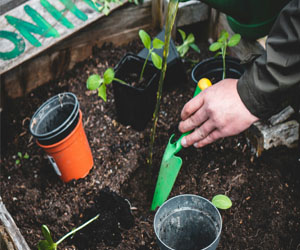 Consider Your Garden's Goals
Consider Your Garden's Goals
Before you dive into the world of seed catalogs, take a moment to consider the goals for your garden. Are you interested in growing vegetables, herbs, flowers, or a combination of these? Are you aiming for a bountiful harvest, stunning aesthetics, or both? Understanding your garden's purpose will help you make the right seed selections.
Open-Pollinated vs. Hybrid Seeds
One of the primary choices you'll encounter is between open-pollinated and hybrid seeds. Open-pollinated seeds are the result of natural pollination and breeding. They tend to be more stable and reproduce true to type, meaning that the offspring will resemble the parent plant.
On the other hand, hybrid seeds are the result of controlled cross-breeding between two different parent plants. They often exhibit desirable traits like disease resistance or improved yield. However, saving seeds from hybrid plants may not produce consistent results in the next generation.
Choosing Varieties
When selecting seeds, you'll have numerous varieties to choose from. Consider factors like:
Climate Suitability: Choose varieties that are well-suited to your local climate and growing conditions.
Growth Habit: Some plants have determinate growth (bushy and compact) while others have indeterminate growth (vining). Select according to your space and support availability.
Days To Maturity: Different varieties have varying maturity periods. Some mature quickly, while others take longer. Plan your garden timeline accordingly.
Disease Resistance: Look for varieties that are resistant to common pests and diseases in your area to reduce the need for chemical interventions.
Flavor And Appearance: Consider the taste and appearance of vegetables and fruits. After all, the end product should meet your culinary and aesthetic preferences.
Quality Matters
It's essential to purchase seeds from reputable sources. Well-established seed companies offer seeds that are more likely to be true to type, have high germination rates, and have been stored properly. When shopping for seeds, pay attention to the seed packets for information on planting depth, spacing, and care instructions.
Building Sustainable Communities For A Better Future
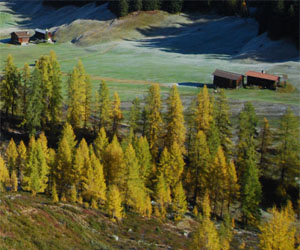
Community And Connection: A strong sense of community is a hallmark of eco-villages. Residents often engage in decision-making processes together and foster a culture of shared responsibility. This sense of connection promotes social well-being and harmony.
Education And Learning: Many eco-villages emphasize learning and education, particularly in the areas of sustainability and eco-conscious practices. Workshops, seminars, and communal learning opportunities are common.
Cultural And Artistic Expression: Creativity and cultural expression often flourish in these communities, with residents embracing arts, music, and cultural activities that promote a sense of belonging and fulfillment.
Benefits Of Eco-Villages:
Environmental Stewardship: Eco-villages are on the forefront of environmental stewardship. By living in a sustainable, low-impact manner, residents reduce their ecological footprints and serve as models for sustainable living for the broader community.
Sustainable Living: These communities demonstrate that it is possible to live a comfortable and fulfilling life while minimizing environmental impact. They showcase the practicality of eco-conscious technologies and practices.
Strong Social Bonds: Eco-villages prioritize strong social bonds and a sense of community. Residents often share responsibilities, resources, and a commitment to a shared vision.
Exploring Alternative Energy Sources
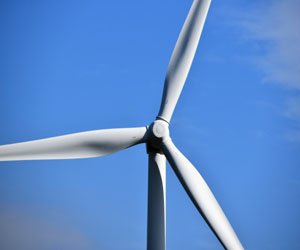 Solar Power: Solar energy is one of the most widely recognized and accessible alternative energy sources. It harnesses the sun's energy through photovoltaic cells, converting sunlight into electricity. Solar panels are now a common sight on rooftops and in solar farms, offering a clean and renewable source of power. The technology has become increasingly affordable and efficient, making it a viable option for both residential and commercial use.
Solar Power: Solar energy is one of the most widely recognized and accessible alternative energy sources. It harnesses the sun's energy through photovoltaic cells, converting sunlight into electricity. Solar panels are now a common sight on rooftops and in solar farms, offering a clean and renewable source of power. The technology has become increasingly affordable and efficient, making it a viable option for both residential and commercial use.
Wind Energy: Wind power has also gained significant traction in the alternative energy landscape. Wind turbines convert the kinetic energy of moving air into electricity. Wind farms, often situated in open, windy areas, have become a prominent feature of many countries' energy grids. The scalability of wind power makes it a flexible and promising energy source.
Hydropower: Hydropower, generated from the energy of flowing water, has been a tried and true source of renewable energy for many years. Large dams and smaller hydroelectric plants generate electricity by harnessing the kinetic energy of water. While these projects can have significant environmental impacts, innovations in small-scale, low-impact hydropower systems are being explored.
Geothermal Energy: Geothermal power taps into the Earth's internal heat. It involves drilling wells to access hot water or steam reservoirs below the Earth's surface and using this thermal energy to generate electricity. Geothermal energy is a reliable source of baseload power and is considered highly sustainable.
A Path To Sustainable Resource Management
 Effective Water Conservation Methods
Effective Water Conservation Methods
Fixing Leaks: One of the most basic yet crucial methods is fixing leaks in plumbing systems. A dripping faucet or a leaky pipe can waste significant amounts of water over time.
Low-Flow Fixtures: Installing low-flow faucets and showerheads is an effective way to reduce water consumption without compromising water pressure or functionality.
Dual-Flush Toilets: Dual-flush toilets provide two flushing options, allowing users to select a lower volume for liquid waste and a higher volume for solid waste.
Irrigation Efficiency: Employing efficient irrigation systems, such as drip irrigation and soaker hoses, can reduce water use in landscaping. Additionally, watering during cooler parts of the day helps minimize evaporation.
Rain Barrels And Cisterns: Collecting rainwater in barrels or cisterns can provide a free source of water for outdoor use, such as watering gardens and lawns.
Landscaping Practices: Using native plants and xeriscaping, a landscaping technique that conserves water, can significantly reduce the need for irrigation.
Water Recycling: Greywater systems can be used to collect and treat water from sinks, showers, and washing machines for reuse in flushing toilets or watering plants.
A Clean Home And A Clean Conscience
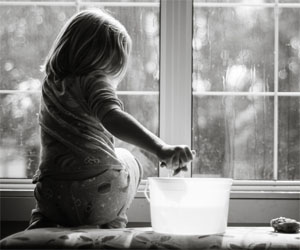 Environmental Impact: Traditional cleaning products can contain hazardous chemicals that, when washed down the drain, enter water systems and harm aquatic life. Green cleaning helps reduce water pollution and the environmental impact of your cleaning routine.
Environmental Impact: Traditional cleaning products can contain hazardous chemicals that, when washed down the drain, enter water systems and harm aquatic life. Green cleaning helps reduce water pollution and the environmental impact of your cleaning routine.
Reducing Plastic Waste: Many green cleaning products come in recyclable or refillable containers, reducing plastic waste and contributing to a healthier planet.
Sustainability: By opting for sustainable cleaning practices, you contribute to a more eco-friendly world and encourage the development of environmentally responsible products.
How To Get Started With Green Cleaning
Assess Your Current Cleaning Products: Start by taking a look at the cleaning products you use. Identify which ones contain harsh chemicals and consider replacing them with greener alternatives.
Make Your Own Cleaning Solutions: Many effective cleaning solutions can be made using simple ingredients found in your pantry. For example, a mixture of vinegar and water can be a powerful all-purpose cleaner.
Read Labels: When purchasing cleaning products, read labels carefully. Look for certifications like "EcoLogo" or "Green Seal" to ensure that the product meets environmental and health standards.
Choose Reusable Cleaning Tools: Opt for reusable cleaning tools like microfiber cloths and mop heads to reduce waste.
Reduce, Reuse, Recycle: Use cleaning products and containers that are recyclable or refillable. This minimizes your environmental footprint.
The Green Cleaning Revolution
Green cleaning is not just a trend; it's a fundamental shift towards responsible and sustainable cleaning practices. It empowers individuals to make informed choices that have a positive impact on their well-being and the environment. It's also a step towards a more mindful and eco-conscious way of living.
Powering Your Home Sustainably
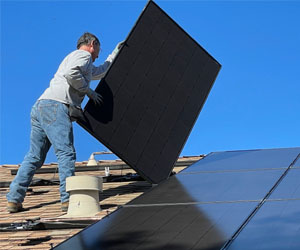 The Rise Of Solar Power
The Rise Of Solar Power
Solar power has become a mainstream energy source, and its use in residential settings is on the rise. Homeowners are increasingly turning to solar panels to generate their electricity, and it's not difficult to understand why. Solar power offers an array of advantages, making it an attractive choice for environmentally conscious individuals.
Eco-Friendly Energy
One of the primary benefits of residential solar solutions is their eco-friendliness. Solar panels harness the energy of the sun, a renewable resource, and convert it into electricity. Unlike traditional fossil fuels, solar power does not produce harmful emissions, making it a clean and green energy source. By switching to solar energy, homeowners significantly reduce their carbon footprint and contribute to a healthier planet.
Lower Energy Bills
Solar panels not only benefit the environment but also your wallet. Once you've invested in a solar panel system for your home, you'll enjoy reduced energy bills. Solar power systems can generate a substantial portion of your electricity needs, which means you'll buy less power from the grid.